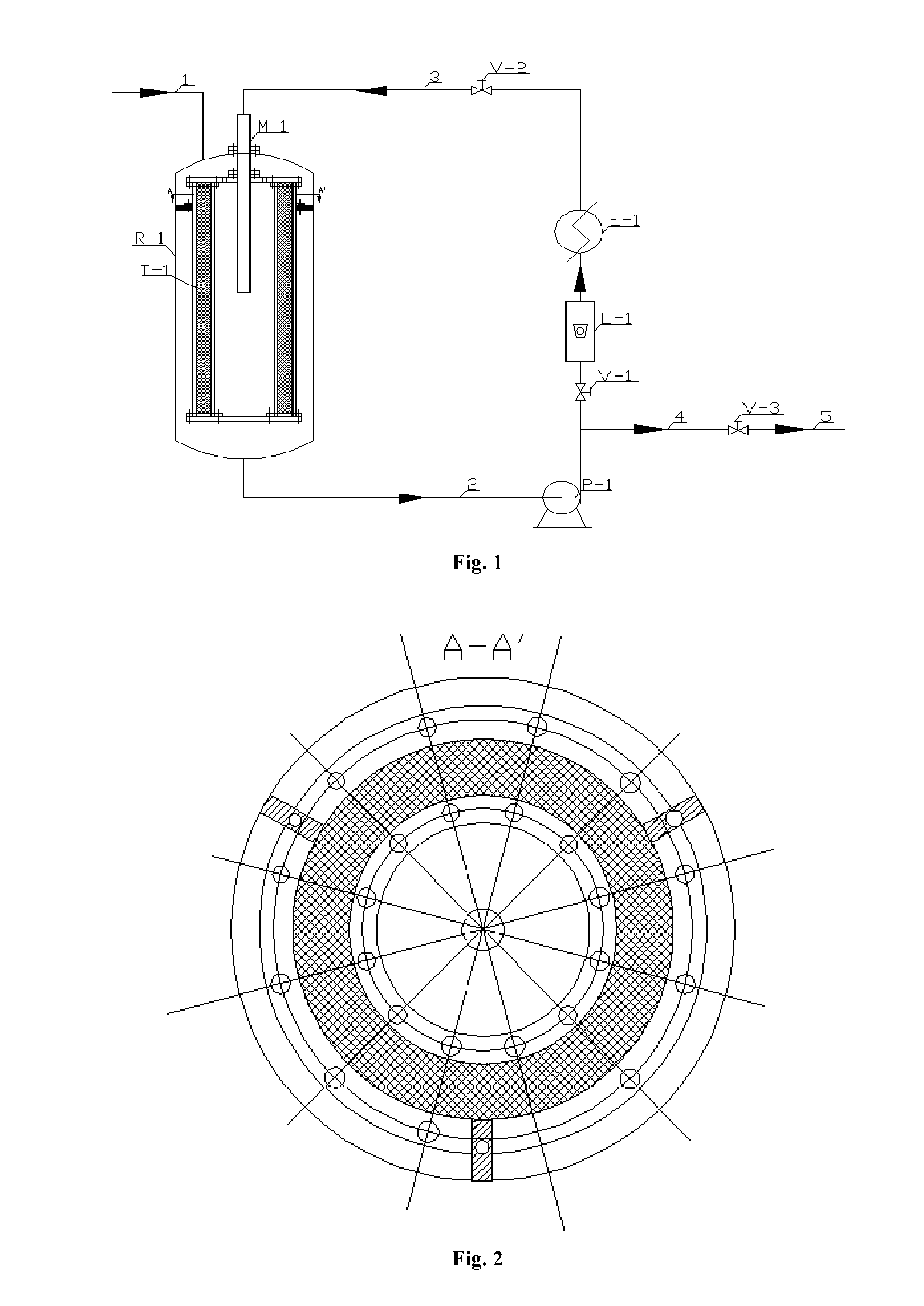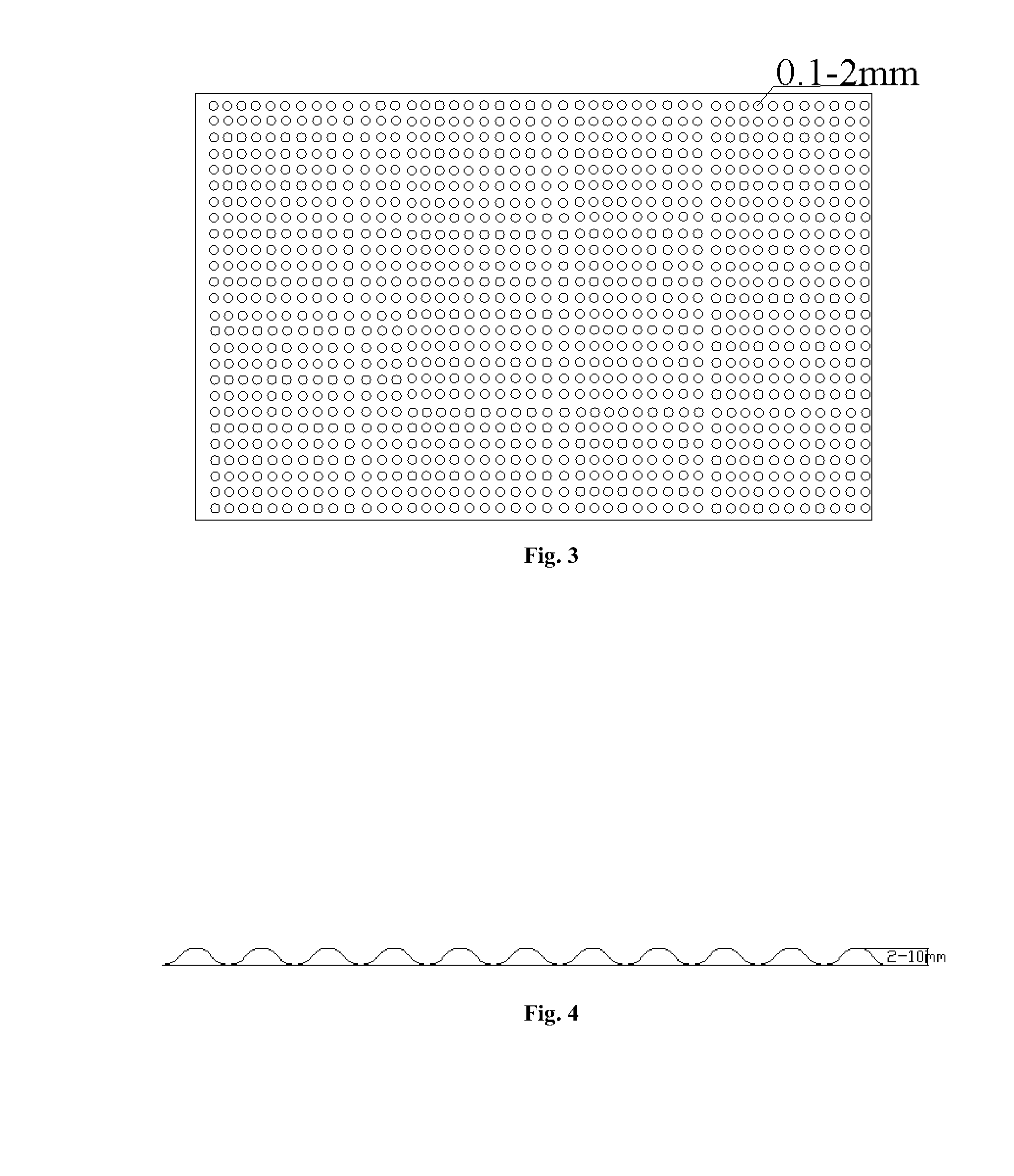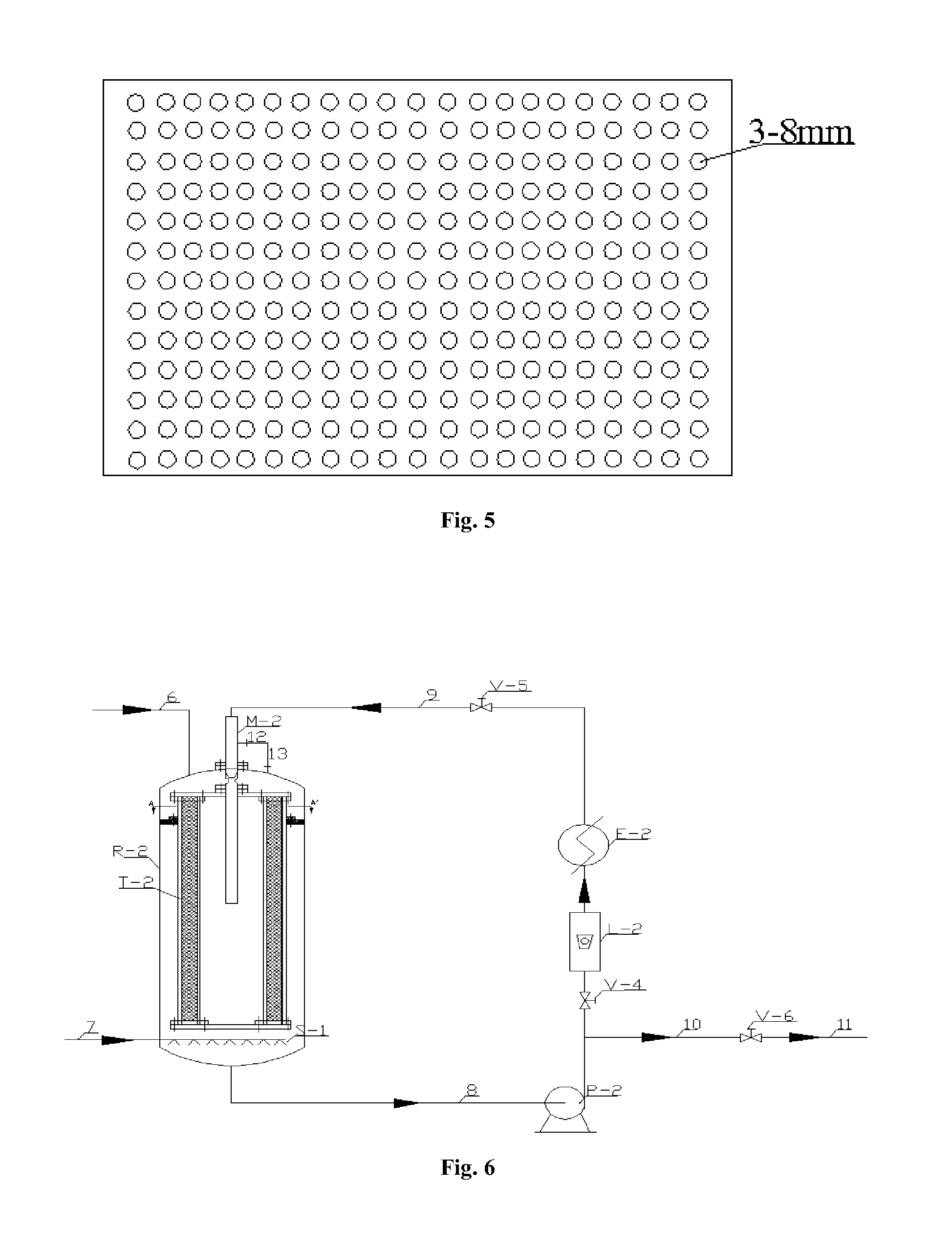Immersion fixed bed reactor intensified by liquid flow
- Summary
- Abstract
- Description
- Claims
- Application Information
AI Technical Summary
Benefits of technology
Problems solved by technology
Method used
Image
Examples
example 1
Liquid-Liquid-Solid Three Phase Reaction System
[0031]Dihydro-myrcene, water and acetone solvent were mixed at a mass ratio of 1:1:2, and the mixture entered via duct 1 into the cylindrical tank R-1 of the IFBR (FIG. 1). The volume of the cylindrical tank was 10 m3, and the aspect ratio was 3:1. Fill the ACCB T-1 with the solid catalyst Amberlyst 15 (Rohm and Haas, USA). The outer diameter of T-1 was 1.6 m, inner diameter was 1.0 m, the height was 4.8 m; the outer steel plate of the side wall was 12 mm thick and the hole diameter is 8 mm, and the hole surface area accounts for 95%. The inner steel plate of the side wall was 3 mm thick with the hole diameter of 0.5 mm and appeared wavy in circumferential direction with a distance of 10 mm between peak and valley. Start circulation pump P-1, and the mass was pumped through valve V1, flow meter and heat exchanger E-1, respectively, into the central column space of T-1 through M-1 and then into cylindrical tank R-1 radically through the ...
example 2
Liquid-Liquid-Solid Three Phase Reaction System
[0032]The reactor and the method used herein were similar to Example 1. Dihydro-myrcene, water and acetone solvent was 1:1.15:2.2 in mass ratio, and the reaction temperature was 98° C., the solid catalyst was Amberlyst 35 (Rohm and Haas, USA). The volume of cylindrical tank R-1 was 6 m3, and the aspect ratio was 2:1. The outer diameter of the ACCB T-1 was 1.2 m and the inner diameter 0.86 m with the height of 2.4 m; the outer steel plate of the side wall was 6 mm thick with the hole diameter of 8 mm and the hole surface area of 90%. The inner steel plate of the side wall was 2 mm thick with the hole diameter of 0.8 mm and appeared wavy in circumferential direction with a distance of 8 mm between peak and valley. After 55 minutes of circulation of the liquid, the valve V-3 was opened for discharge, and the mixture was pumped into the subsequent section for separation. Simultaneously, new mass was supplemented to the reactor through duct ...
example 3
Liquid-Liquid-Solid Three Phase Reaction System
[0033]This invention used herein was similar to Example 1. The molar ratio of acetate and n-butanol was 2:1, and the reaction temperature was 85° C., the solid catalyst was Amberlyst 15 (Rohm and Haas, USA). The volume of cylindrical tank R-1 was 3 m3, and the aspect ratio was 1.8:1. The outer diameter of the ACCB T-1 was 1 m and the inner diameter 0.78 m with the height of 2 m. The outer steel plate of the side wall was 10 mm thick with the hole diameter of 8 mm and the hole surface area of 90%. The inner steel plate of the side wall was 2 mm thick with the hole diameter of 0.5 mm and the hole surface area of 85%. It appeared wavy in circumferential direction with a distance of 6 mm between peak and valley. After 30 minutes of circulation of the liquid, the valve V-3 was opened for discharge, and the mixture was pumped into the subsequent section for separation. Simultaneously, new mass was supplemented to the reactor through duct 1 so...
PUM
 Login to View More
Login to View More Abstract
Description
Claims
Application Information
 Login to View More
Login to View More - R&D
- Intellectual Property
- Life Sciences
- Materials
- Tech Scout
- Unparalleled Data Quality
- Higher Quality Content
- 60% Fewer Hallucinations
Browse by: Latest US Patents, China's latest patents, Technical Efficacy Thesaurus, Application Domain, Technology Topic, Popular Technical Reports.
© 2025 PatSnap. All rights reserved.Legal|Privacy policy|Modern Slavery Act Transparency Statement|Sitemap|About US| Contact US: help@patsnap.com



